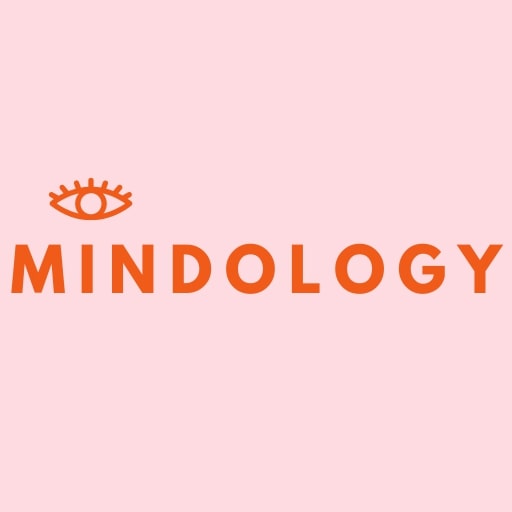Hypnosis or Self Hypnosis is simply being in a meditative sometimes trance-like state, and in this state of hypnosis, we have highly focused attention with heightened suggestibility. It is like meditation, except more goal-orientated, which is why many success-driven people are drawn to it. Claire Aristides, founder and creator of the Mindology App, an app to calm and empower the mindset gave us her top tips on all things hypnosis.
You’ll also like this:
Why a Chiropractic Visit is Just Like Taking a Multivitamin Supplement?
5 Tips To Break Up With Your Diet Plan Now
Why Infrared Saunas Are The Best Invest For Troubled Sleepers?
There are 2 parts to self-hypnosis – firstly taking yourself into a calm meditative state (this is an essential first step and is where there is a similarity to meditation), and once there making suggestions to yourself of what you want.
All forms of hypnosis in theory is self-hypnosis, because no one can make you do anything you don’t want to do – despite what you see on TV about hypnosis being brainwashing or mind control. This is not the case.
Despite what stage performer do – note the word performers!
Most of us have already been in a hypnotic state at some point in our life. For example Have you ever gone into a relaxed, zoned out state say when watching your favourite TV show, or reading a book and you are completely absorbed in the story, or listening intently to a podcast – and you are just zoned out lost in the moment, these are examples of a being in a hypnotic state. A completely normal, natural state of mind.
When we purposely do self-hypnosis we aim to tell our unconscious mind what we want for ourselves. Many great people business leaders, surgeons, sportspeople, musicians, performers will all use a form of self-hypnosis to get them into the zone, and see and feel in their mind what they want for themselves. Hypnosis has been part of the Russian Olympic teams training programme since the 1960’s.
We have over 80,000 thoughts daily and these thoughts can often evoke emotions. All this busyness of thoughts and emotions swirling around in our mind each and every day – can be overwhelming. Add into that our digital-non stop-never switch-off world. We are overwhelmed by this constant flow of energy and activity. Self-hypnosis is about pausing this busyness and settling the mind.
Adding hypnosis to part of your daily routine is the best way to make long lasting changes to your mental wellbeing and mindset. Neuroplasticity research shows us that the brain is malleable—that it grows with effort and experience; with repeated practice (repetition) – we build new neural pathways, and there is a saying ‘cells that fire together wire together’– and become our new behaviour.
There’s a great quote by Buddha – We are what we think. And to me, it sums up the power of self-hypnosis – by using self-hypnosis techniques you are creating a habit of thinking more positively for yourself, being clear, and clarifying your goals and vision for yourself, and of course, the first step of calming your mind down has significant overall health benefits.
The Mindology App has a step by step guide to self-hypnosis which you can listen to – So you can learn how to do it at home, as well as a workbook to help you formulate your goals for yourself. These are great free resources on the app you can tap into now.

Claire’s Step by Step Guide to Self-Hypnosis Meditation at Home
1. Sit in a Comfortable Position with Legs Uncrossed
Reduce distractions by being somewhere you won’t be disturbed. This is your time.
2. Find a Point to Focus on + Take a Deep Breath in
Pick a spot on the wall and fix your gaze on that point. Keep your eyes fixed on that point. Take in a deep breath and hold it for a moment, then breathe out. Silently repeat to yourself… “My eyelids are heavy and ready to close, I can relax and let go”. Repeat this a couple of times, close your eyes. Relax.
3. Let Your Body Relax
Breathe slowly in and slowly out. Count down from 5 to 0. Tell yourself that with each and every count you’re becoming more relaxed. Focus on your breathing, and how relaxed your body is becoming. Stay in this relaxed state for a couple of minutes.
4. Add Your Suggestions & Goals
In this relaxed state, calmly & confidently state a positive suggestion to yourself, either out loud or quietly in your mind. Repeat a few times, feeling the suggestion wash over your mind & body. You can add in visualisation (visual imagery) that represents your goals.
5. Come Back to the Room Counting From 1-5
Tell yourself that you are becoming aware of your surroundings and at the count of five you will open your eyes, stretch your body.
6. Repeat this Technique Daily
Repeat this technique as often as you can, notice how each time you reach a deeper level of relaxation. If you find you do not relax as much as you would like, be patient with yourself, don’t force it. Build a habit for yourself.
Claire’s Top Tips
1. Say It And Mean It, Feel It
Say your hypnotic goals & suggestions with feeling, really mean what you say. Be honest with yourself, design suggestions that REALLY mean something to you and resonate with what exactly you want.
2. Phrase Suggestions In A Positive And Present Tense
Suggestions are far more effective when you state what you want rather than what you don’t want. For example: “I am calm” is better than “I am not anxious”. A phrase in the present tense, as though they are happening now, e.g. “I am becoming more confident” rather than “I will try to be confident”.
3. Create Suggestions That Are Specific & Realistic
Write your goals down on paper. Clarify what you want to work on and be specific. Structure your suggestions on changes you wish to see in yourself rather than things that are out of your control, Work on one goal at a time, repeating suggestions associated with that goal. When you see some results, move on to your next goal. For long-term goals, it may be helpful to break them down into manageable steps.
4. Adding Visual Imagery
You can also bring in visualisation and visual imagery to represent your goals. Decide on the imagery you plan to use. Build your picture in your mind of yourself confident at the presentation, or calm and focussed at your work meeting. Using mental images to visualise your outcome, taps into your creativity and imagination.
5. Repeat, Repeat, Repeat
One of the most important rules when practicing self-hypnosis is repetition, to embed it in your unconscious mind. Build a new habit.
You’ll also like this:
Life hacks: How to Do Walking Meditation
How to Decorate With Crystals and Get All Their Benefits
Salt Room Benefits for your Overall Health
How is hypnosis done?
Hypnosis is usually done with the help of a therapist using verbal repetition and mental images. When you’re under hypnosis, you usually feel calm and relaxed, and are more open to suggestions.
What is hypnosis used for?
Hypnotherapy can be used to treat anxiety, phobias, substance abuse including tobacco, sexual dysfunction, undesirable spontaneous behaviours, and bad habits. It can be used to help improve sleep, learning disorders, communication, and relationship issues.
What does hypnosis do to your brain?
In the beginning, hypnosis can seem difficult and hard to grasp. You’ll experience self doubts about your abilities to learn and apply it. It’ll test your confidence. You might fall into the trap of overwhelming yourself with too much knowledge, searching for the “magic bullet” technique of quick-and-easy hypnosis.
hypnosis for therapy hypnosis as therapy mindfulness









Leave a Comment